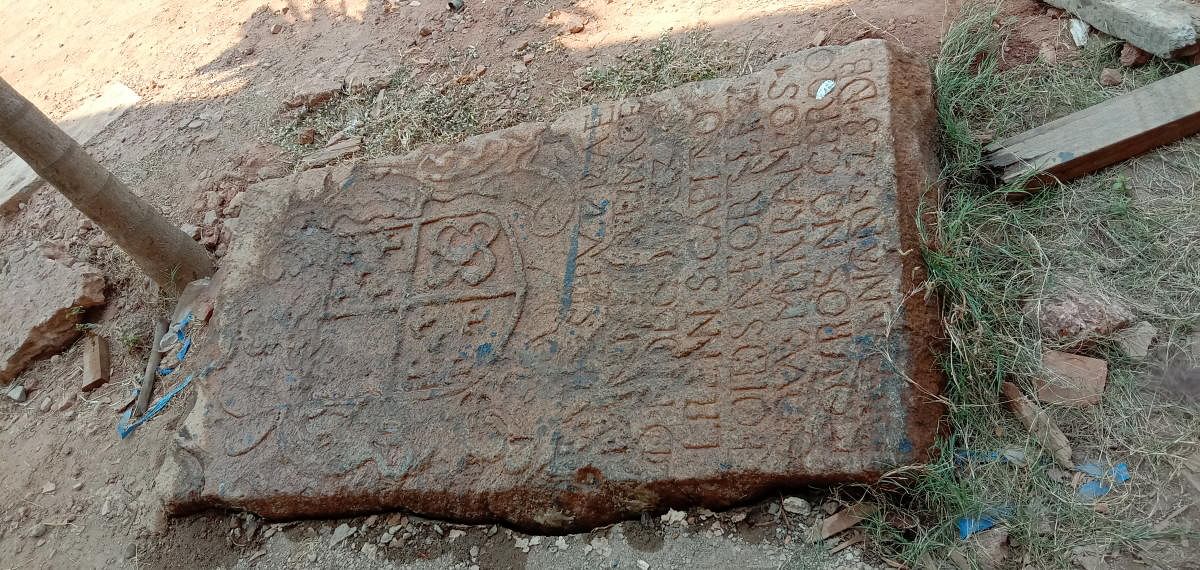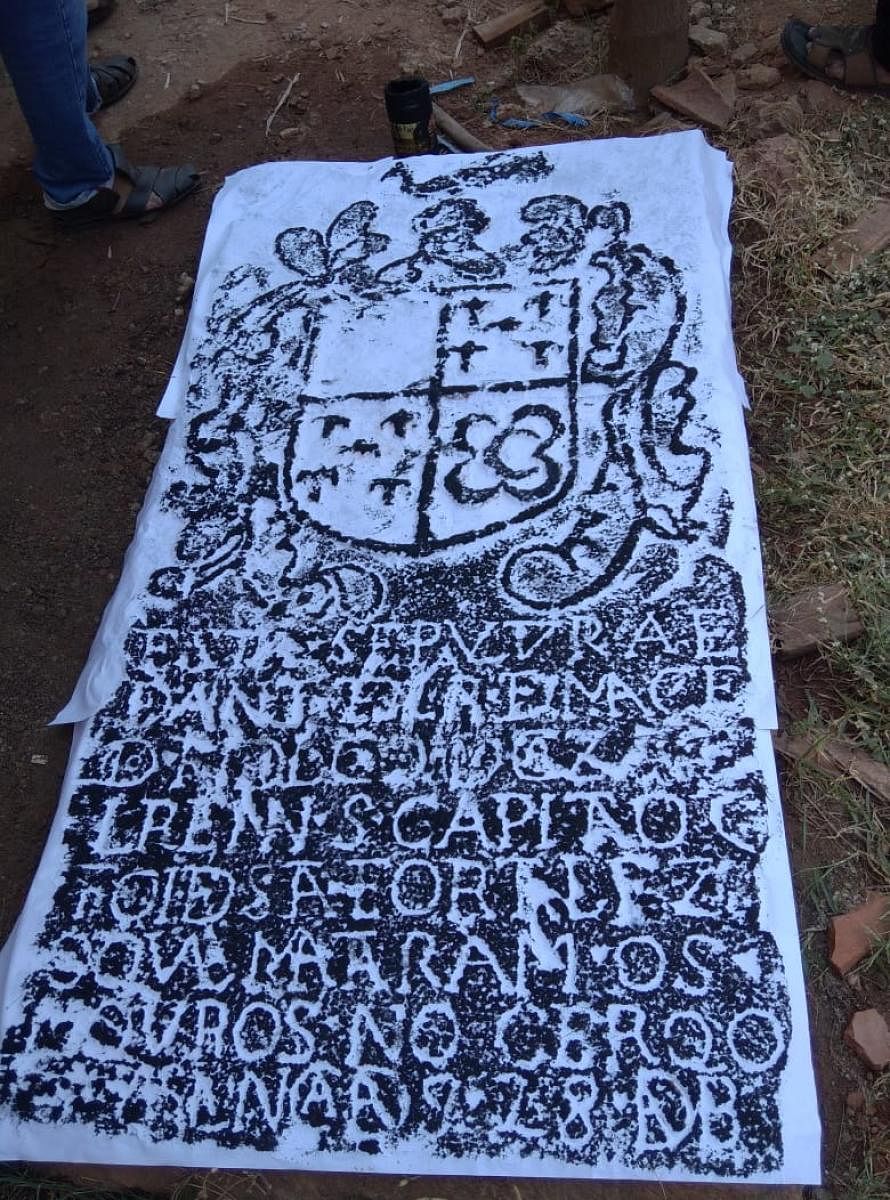

Antonio Teixeira de Macedo died in Mangalore in the last year of the 16th century. Antonio was one of history’s many minor figures, forgotten until the chance discovery of an old granite tombstone last month in Bolar, a locality by the Nethravathi river in the coastal city.
The Portuguese inscriptions on the tombstone had worn out. What could be deciphered described a bit of his story: “This tomb is of Antonio Teixeira de Macedo, nobleman of the house of the King our lord, captain, who was of this fortress, who was killed by the Moors in siege year 1599, day 28 April."
The tombstone also has a coat of arms that identifies Antonio’s family connections.
Further investigation also reveals a life beset by misfortune. Antonio sailed from Lisbon on April 4, 1591.
A document in the Archivo Nacional Torre do Tombo reveals that he was captain of the ship Santa Cruz (800 tonnes), which was part of a convoy that returned from India in 1592.
This convoy also included the Madre de Deus, a massive vessel of 1,600 tonnes. The Santa Cruz ran aground on Corvo island in the North Atlantic during a storm as it tried to avoid capture by the English navy. Much of the cargo was unloaded and the vessel set alight, so that it would not fall in English hands.
The Madre de Deus was captured in the Battle of Flores 1592 and taken to England. Its cargo was said to be worth about half of Queen Elizabeth’s annual revenue.
On April 7, 1593, Antonio sailed for India again, this time as captain of the Sao Christovao. On the return trip in 1594, his vessel was shipwrecked in Mozambique. Antonio and his crew were saved by another ship.
On January 15, 1595, he sailed from Goa as captain of the Madre de Deus, built in Bacaim. A month later, he was shipwrecked in Mozambique again. Apparently, he was rescued, for he died some years later in Mangalore.
The story gets more interesting. Antonio’s sister, Francisca Vasconelles, had married the King of Maldives and had settled in Goa.
Their son, Dom Fillipe (1603-32), succeeded them.
In a letter to Portugal’s King, Dom Fillipe writes that his sister had asked for the services of two brothers Antonio Teixeira de Macedo and Francisco Teixeira.
He adds that Antonio was appointed to Mangalore fort for five years but died three years into his service, while defending it. Francisco was killed while serving in the navy.
Portugese in Mangalore
Mouro (Moor) was the Portugese term for Muslims. The Portuguese faced fierce and continuous resistance from Arab traders, who were Portugal’s rivals in the lucrative Indian Ocean trade.
The ruthless manner in which Portugal went about destroying the Arab commercial network is revealed in the book Tuhfat al-Mujahidin, written around this time by Shaikh Zainuddin Makkdum.
Apart from continual conflicts between the two, the Portuguese had clauses inserted into the treaties with the Ikkeri Nayakas, to severely hinder Arab commerce.
For instance, in the December 15, 1678 treaty, Basavappa Nayaka agreed to have the Arab timber yard burnt, deny Arab vessels entry to his ports and the right to trade in his kingdom, and allowed the Portuguese to attack any Arab vessel found in his ports. He further agreed that his ships would not sail to Arab ports.
The Arabs retaliated whenever they had an opportunity. One such retaliation must have arisen in 1599. Antonio Teixeira de Macedo was a casualty.
Tombstones can tell stories, and bring alive the long and often violent struggle between families, chieftains and local kingdoms. The question is, how many such artefacts lie buried or scattered around us and whether we can save them.